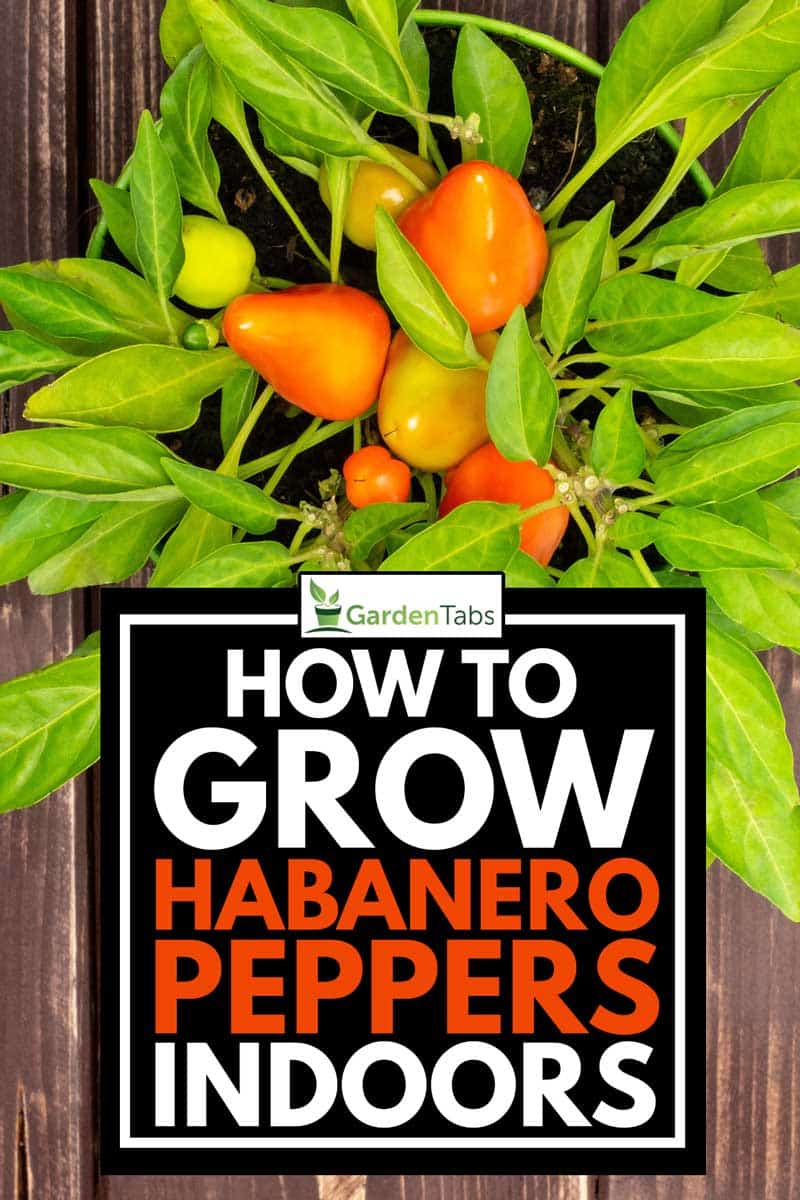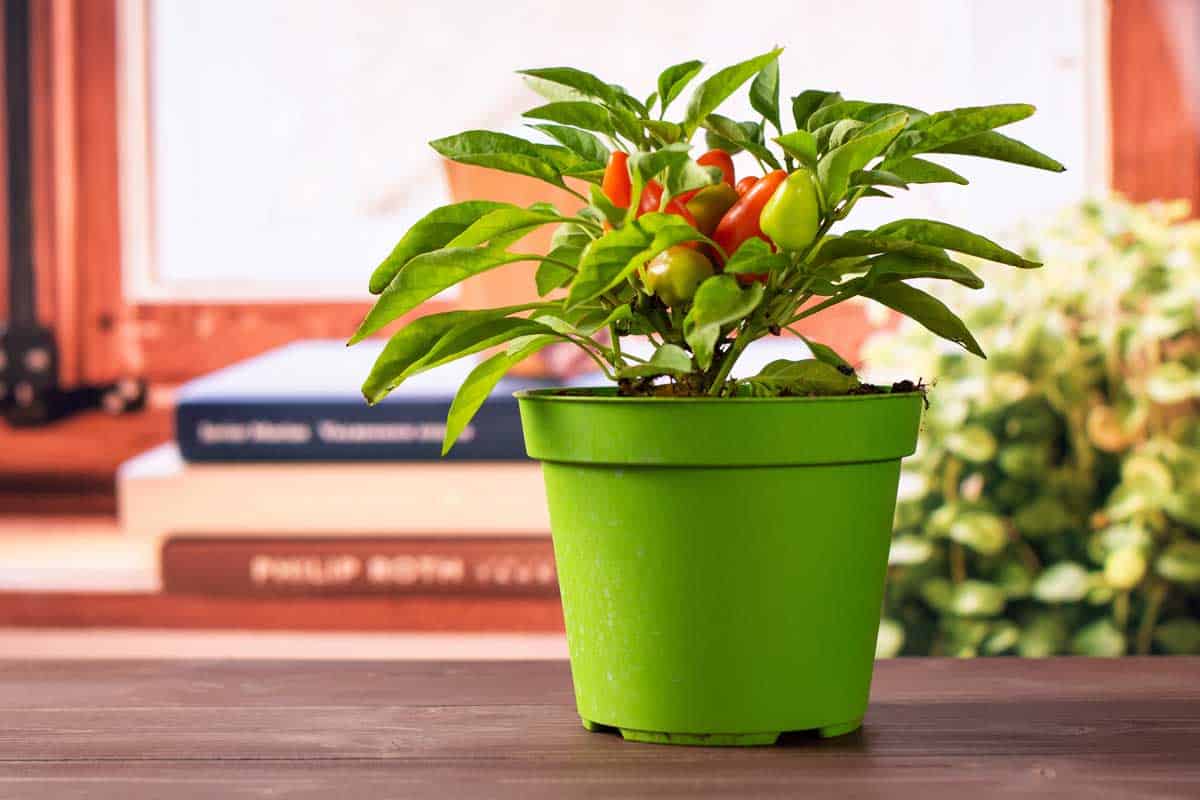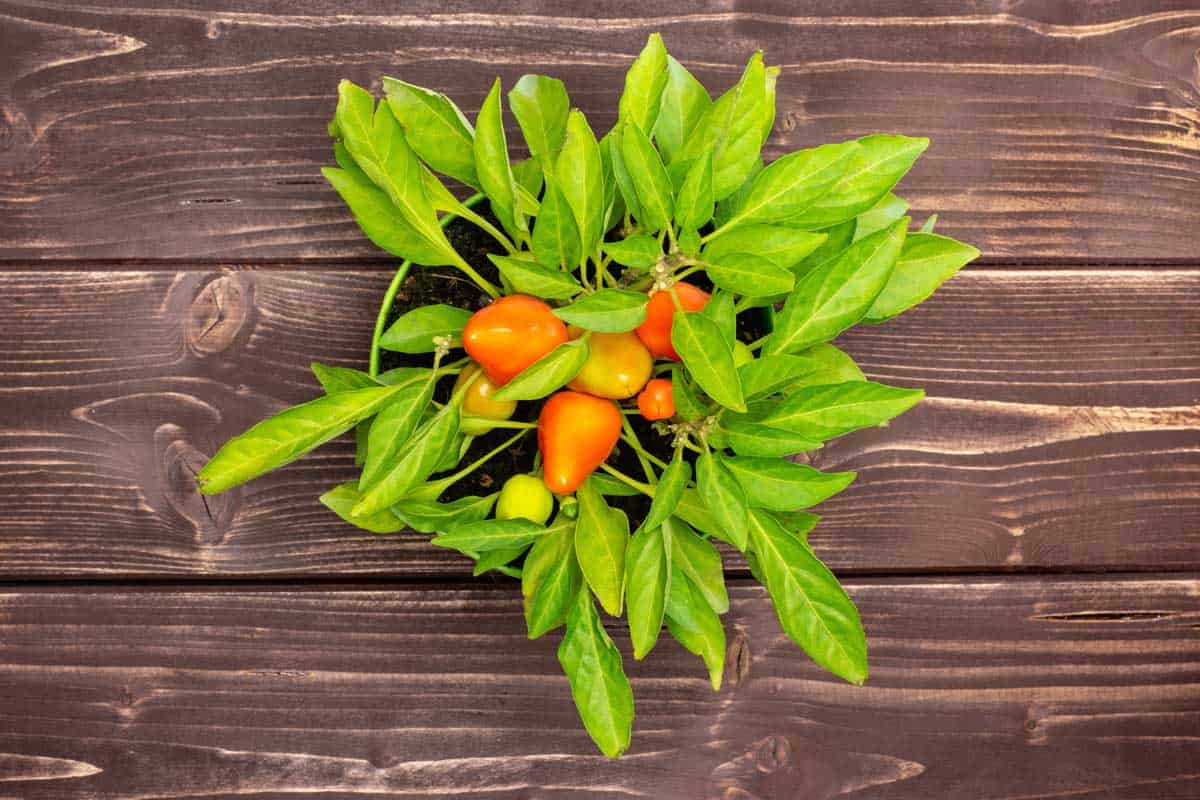 Habanero peppers are great for adding some heat to everything from salsa to jam to salad dressing. But did you know you can grow your own fresh habanero peppers on your kitchen counter? In fact, a number of long flowering chilies do well indoors, from Thai peppers to chiltepins.
Habanero peppers are great for adding some heat to everything from salsa to jam to salad dressing. But did you know you can grow your own fresh habanero peppers on your kitchen counter? In fact, a number of long flowering chilies do well indoors, from Thai peppers to chiltepins.
To grow habanero peppers inside, there are three main things to remember:
- Choose a suitable variety, type, and pot.
- Choose a suitable location.
- Care for your habaneros to include fertilizing, harvesting, and pruning.
Let us take a deeper look at these three steps to help you understand how to grow habanero peppers indoors. Just keep reading!
Choose The Variety, Type, And Pot
If you already know you want to plant habanero peppers specifically, the first choice is the variety and whether or not you want to start from seed or transplant.
Common varieties of habaneros include the common orange habanero, Caribbean red habanero, and the chocolate habanero. If you are growing them indoors, the main thing to consider is what you want from the plant. If you are just looking for some yummy, classic peppers, the common orange habanero is a great way to go. If you're looking for something strange, the chocolate habanero may be for you!
Choosing to start from seed or transplant is a straightforward decision. Starting from seed is generally harder but seeds may be easier to get ahold of if your local nursery does not carry the variety you want. Transplants are by far the easiest when it comes to habaneros since they are already established.
Picking a pot is another simple choice but is determined by your variety. If you decide to go with a large variety, go with a large pot. Want a smaller variety? Go with a smaller pot. Regardless, you will need a container that is a gallon or larger; most habaneros need two to three gallons of grow room.
Choose The Best Location
Of the three main things to consider when growing habaneros, location is the most crucial. Location can make or break your habanero harvest. The most important thing to consider with location is light. Habaneros need full light in order to grow and fruit successfully.
Once established, habaneros need full sun; around 12 hours of light each day is ideal. At a minimum, habaneros need between 6 and 8 hours of sunlight in order to flower and bear fruit. Less light will likely inhibit production. If you do not have that much light, grow lights may be required.

Grow lights are highly recommended but not required. Grow lights help give your plants enough light to fruit and also keep them from getting leggy. It is especially important for seedlings if you decide to start from seed.
It is also important to choose a location where the soil will be warm — anything above 70 degrees Fahrenheit keeps them happy. Down to 60 degrees, they will be fine, but they do not like it much lower than that. One of the major perks of growing habaneros inside is climate control. Growing habaneros outside when it gets cold can be extremely difficult.
Care
Habaneros are fairly easy to care for once you get them enough light. They require relatively little maintenance, but a little care goes a long way. Pruning and fertilizing are especially helpful.
Pruning pepper plants when they are young, at about 6 inches tall, is ideal. Cutting the top nodes off, sometimes called topping, helps the plant become more bushy than tall. It also helps increase your yields.
If you do not have a large pot and are concerned about your plant being busy, then prune the sides and “train” it to be taller. Be aware that bushier plants tend to have higher yields, but you should still get a decent yield if you train them to be tall instead.
A simple 5-5-5 fertilizer usually does the job. Be careful not to pick a fertilizer that is too high in nitrogen, especially with older plants. High levels of nitrogen may cause the plant to focus on leaf production instead of fruit production. A seaweed, kelp, or fish fertilizer usually does well.
Are Habanero Peppers Hard To Grow?
Starting habaneros from seed can be difficult, but once they are established they are fairly easy to grow, especially indoors. Skip over the hardest part of growing the peppers by getting a mature plant from your local nursery.
Once you find a good spot with plenty of light for your new habaneros to call home, they are fairly low maintenance. The plants only need to be watered once or twice a week, but be careful not to water them too often. Overwatering may lead to common fungal problems like blossom end rot.
Pro tip: if you like spicier peppers, reduce watering when you spot young peppers. That will increase the capsaicin levels which will make them spicier.
How Long Does It Take To Grow Habanero Peppers?

It takes habanero peppers a long time to grow from seed to harvest. If you get a transplant it may take up to 90 days to get a harvest, but if you are starting from seed it may take even longer.
When buying, be sure to check the variety because habanero peppers are generally perennials. If you keep your habaneros indoors, they will likely produce peppers for multiple years. If you decide to move them outside for part of the year, make sure to move them back in before the first frost. Habaneros do not like the cold and may die or be damaged if they are exposed to below-freezing temperatures.
Can You Grow Habanero Peppers Indoors All Year?
In theory, yes. Habanero plants are perennials and will grow and produce multiple years. If they have enough light and are kept in an area above a toasty 70 degrees Fahrenheit, they should continue to produce peppers all year long. If production tapers off, try adding fertilizer or additional light.
Some recommend fertilizing peppers every week if they are producing flowers and fruit. Watch your plants and alter your care methods to meet their needs. Do not be afraid to fertilize often even if the plants are doing well. Check your fertilizer bottle to see if it has specific recommendations.
Also do not be afraid of giving your peppers too much light. They would happily soak up 24 hours of light given the chance. But do not keep the plants too close to the grow lights, as that may cause sunscald. If you notice the fruits discoloring or splitting, try moving the light further away.
Looking for other things you can grow in small spaces? Check out some of our other articles:
How to Grow Microgreens Indoors
